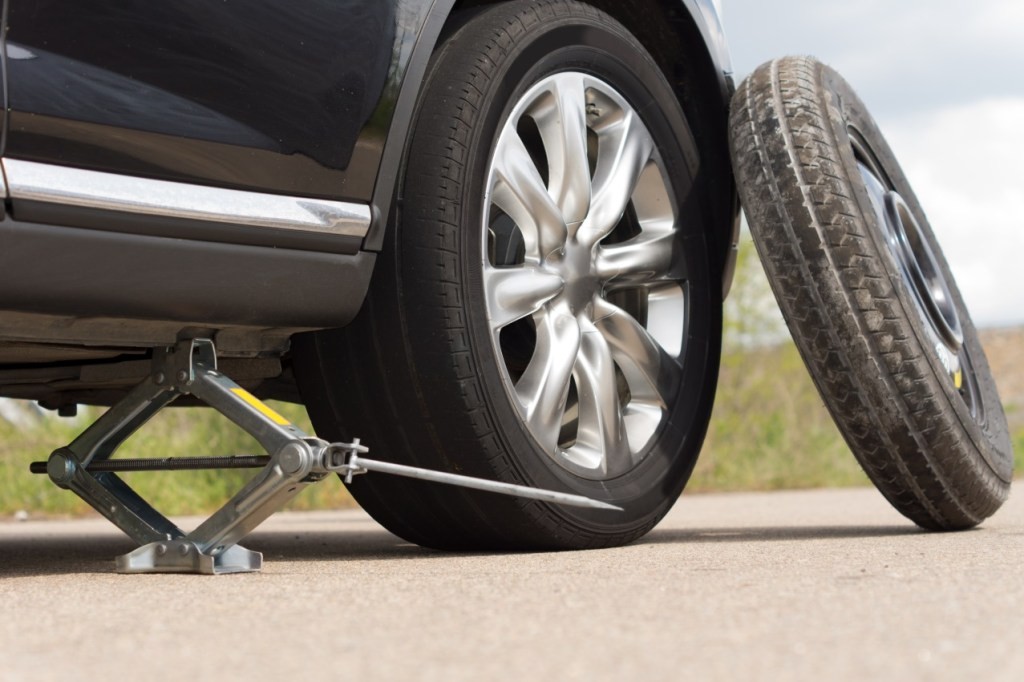If you have a flat tire, you know how frustrating a process it is to get your car back to its normal operation. Not only does it disrupt your travel, it also takes time and money to replace a flat. After you change the flat tire and install your spare, you might be wondering: how long can you drive on it?
In this article, we’ll tell you just how far you can drive on a spare tire, what the key differences in types of spare tires are, and best practices for driving on a spare tire.
Let’s jump right in by answering your main question:
You should drive no more than 50 miles on a temporary or donut spare tire if possible. If you absolutely must go longer than 50 miles, avoid driving on it longer than 70 miles. A spare tire isn’t meant to completely replace a tire, rather, its purpose is to tide you over until you can properly replace it.
Additionally, you shouldn’t drive faster than 50 mph on a temporary or donut spare tire, as they have far less traction and durability than a standard tire. You probably wouldn’t want to drive longer or faster on a spare anyway, as the typical spare can make your vehicle feel more like an airplane ambling down a runway than a car driving down a highway.
Once you are driving your spare, you should replace it with a proper full-size tire as quickly as possible to stay safe on the roads.
Types of Spare Tires:
There are several kinds of spare tires, but which one you will use mostly depends on the type of vehicle you’re driving.
- Compact and Midsize Cars: Small to midsize cars often use compact temporary spares, often referred to as ‘donut’ tires. These are small tires that usually fit inside your vehicle, beneath the floor of the trunk. These tires not only differ from regular tires in their shape and size, but also in their required tire pressure. While most tires for smaller vehicles require a tire pressure around 35 PSI or so, these spare tires often require around 60 PSI.
- SUVS, Crossovers, and Trucks: Larger vehicles will often come equipped with a full-size spare tire. These vehicles are significantly heavier than most sedans and mid-sized cars, so the spare tires are usually larger to support the vehicle’s full load, and possibly additional cargo or items being towed.
Full-size spares are typically much better quality than a donut spare; however, they still should be replaced as soon as possible. These spares often aren’t as durable, may have narrower wheels than the standard tires, and may not be produced by the same manufacturer as your other tires.
Full-size spare tires should be regularly inspected too, especially if they are secured to the bottom of the vehicle and therefore may be exposed to harsher elements.
How to drive safely on a spare tire
Regardless of whether your spare is a donut or a full-size spare, you’ll want to be careful while driving on it. To drive safely on your spare tire, follow these best practices:
- Check your spare tire’s pressure regularly when it isn’t in use. Spare tires often have different inflation pressure needs than your regular tires, so it’s wise to check them for proper inflation. Plus, a spare tire isn’t much help if it has low pressure.
- Give yourself extra space and time to brake. Using a spare tire can cause your vehicle’s anti-lock brake system (ABS) light to turn on, or for your ABS to not function properly. Additionally, a donut spare can lead to inaccuracies in some vehicles’ speedometers. Braking early and with extra space between you and other vehicles can ensure you’re not in for surprises.
- Be extra careful when driving in inclement weather. Spare tires don’t have advanced treads, so they aren’t able to provide the traction your regular tires would. Spares are therefore more susceptible to slipping or hydroplaning (sliding across the surface of puddles).
- Replace your spare when necessary. Replacement will depend on the type of spare you have; check your vehicle’s owner manual, or inspect the spare for more information on how frequently you should replace it. Many spare tires have a lifetime of about eight years.


